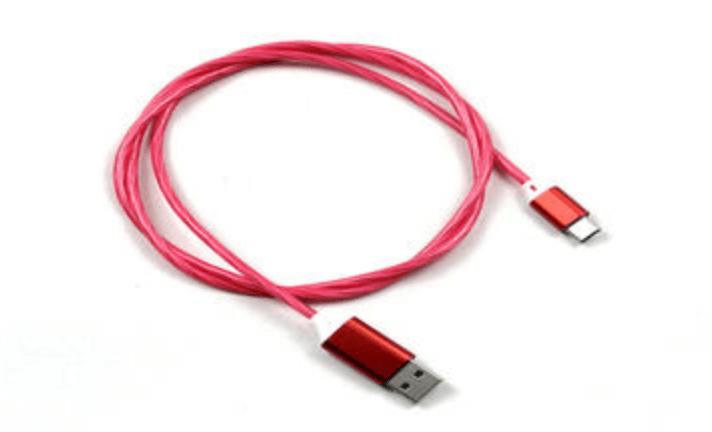
What are the Advantages of Type C USB Cable?
USB cables have become an essential component for transferring data and charging devices. Among the various types available, the Type C USB cable stands out as a versatile and powerful solution. In this post, we will explore the features, compatibility, data transfer capabilities, and differences between Type C USB cables and other standards, as well as shed light on the distinction between Type C chargers and traditional chargers.
What is a Type C USB Cable?
The Type C USB cable is a relatively new standard that offers a reversible connector, allowing users to plug it in any orientation. It is designed to be compact, durable, and capable of high-speed data transfer and power delivery. With its slim and versatile design, it has quickly gained popularity in the tech industry.
What are the Advantages of Type C USB Cable?
In this section, the author would list som advantages of Type C USB cables:
●Reversible Connector
One of the significant advantages of Type C USB cables is their reversible connector. Unlike traditional USB connectors, which require users to insert the cable in a specific orientation, Type C cables can be plugged in either way, making them incredibly convenient and user-friendly.
●Compact and Versatile Design
Type C USB cables feature a slim and compact design, making them suitable for use with a wide range of devices, including smartphones, tablets, laptops, and more. Their smaller size allows for more flexible and portable use, particularly in modern, slim devices.
●High-Speed Data Transfer
Type C USB cables support high-speed data transfer rates, enabling quick and efficient file transfers between devices. With USB 3.1 and USB 3.2 standards, Type C cables can achieve data transfer speeds of up to 10 Gbps and 20 Gbps, respectively, providing faster connectivity compared to older USB standards.
●Power Delivery
Type C USB cables support Power Delivery (PD) technology, allowing for enhanced power delivery capabilities. This means they can deliver more power to charge devices rapidly. With PD, you can charge your devices faster and efficiently, making it particularly beneficial for smartphones, laptops, and other power-hungry devices.
●Universal Compatibility
Type C USB cables are increasingly becoming a universal standard across various manufacturers and devices. Many newer smartphones, tablets, and laptops now come equipped with Type C ports, ensuring compatibility and interoperability between different devices. This universality eliminates the need for multiple cables and adapters.
●Audio and Video Support
Type C USB cables often support alternative modes, such as DisplayPort and HDMI, allowing them to transmit audio and video signals. This feature enables you to connect your device to external monitors, projectors, and TVs, offering seamless display options and enhancing your multimedia experience.
●Future-Proof
Type C USB cables are considered future-proof due to their versatility and growing adoption. As more devices transition to Type C ports, investing in Type C cables ensures compatibility with future devices and reduces the need for frequent cable replacements.
What Devices Are Compatible with Type C USB Cables?
Type C USB cables are compatible with a wide range of devices, including smartphones, tablets, laptops, gaming consoles, and more. Many newer devices, such as the latest models of smartphones and laptops, now come equipped with Type C ports, making it a universal standard across various manufacturers.
Are Type C USB Cables Capable of Data Transfer?
Absolutely! Type C USB cables support high-speed data transfer rates, making them ideal for tasks like transferring large files or streaming high-definition video. With the introduction of USB 3.1 and USB 3.2 standards, Type C cables can reach data transfer speeds of up to 10 Gbps and 20 Gbps, respectively, providing lightning-fast connectivity.
What is the Difference Between USB and USB Type C?
USB Type C is not just a different version of the USB standard; it represents a new physical connector. Unlike the traditional USB-A connectors, which are rectangular and asymmetrical, Type C connectors are small, reversible, and symmetrical. This means users no longer need to fumble with the orientation of the cable when plugging it in.
Is an Apple Charger a USB-C?
Apple devices have traditionally used proprietary connectors, such as the Lightning connector. However, with the introduction of newer MacBook models and the latest iPad Pro, Apple has embraced the USB-C standard. Therefore, the newer Apple chargers feature a USB-C connector, providing compatibility with other Type C devices.
What is the Difference Between a Normal Charger and Type C Chargers?
Traditional chargers often use larger, bulkier connectors and offer slower charging speeds. On the other hand, Type C chargers utilize the more compact and versatile Type C connector, enabling faster charging capabilities. Additionally, Type C chargers support power delivery (PD) technology, allowing for more efficient and rapid charging of compatible devices.
Conclusion
Type C USB cables have revolutionized the way we connect and charge our devices. With their reversible design, high-speed data transfer capabilities, and compatibility across various devices, Type C USB cables have become the go-to standard for modern technology.
Understanding the differences between Type C and other USB standards, as well as recognizing the advantages of Type C chargers, empowers users to make informed choices when it comes to their connectivity and charging needs. Embrace the future of connectivity with Type C USB cables!
Understanding the differences between Type C and other USB standards, as well as recognizing the advantages of Type C chargers, empowers users to make informed choices when it comes to their connectivity and charging needs. Embrace the future of connectivity with Type C USB cables!







发表评论